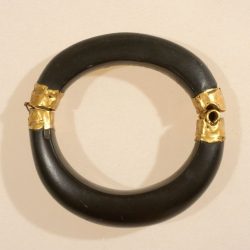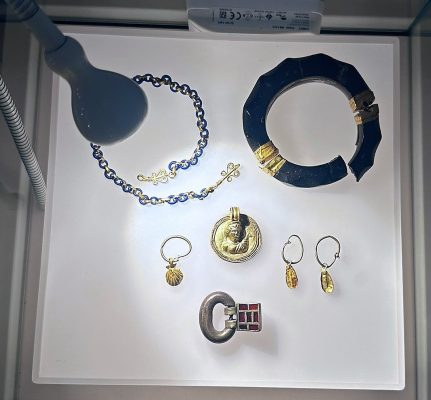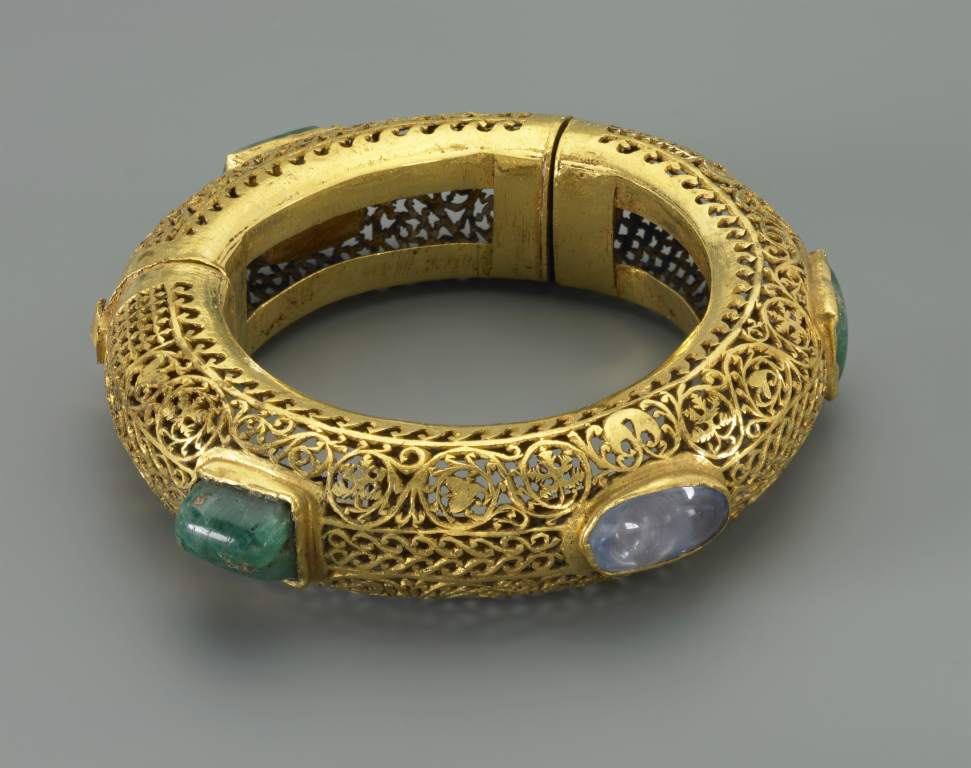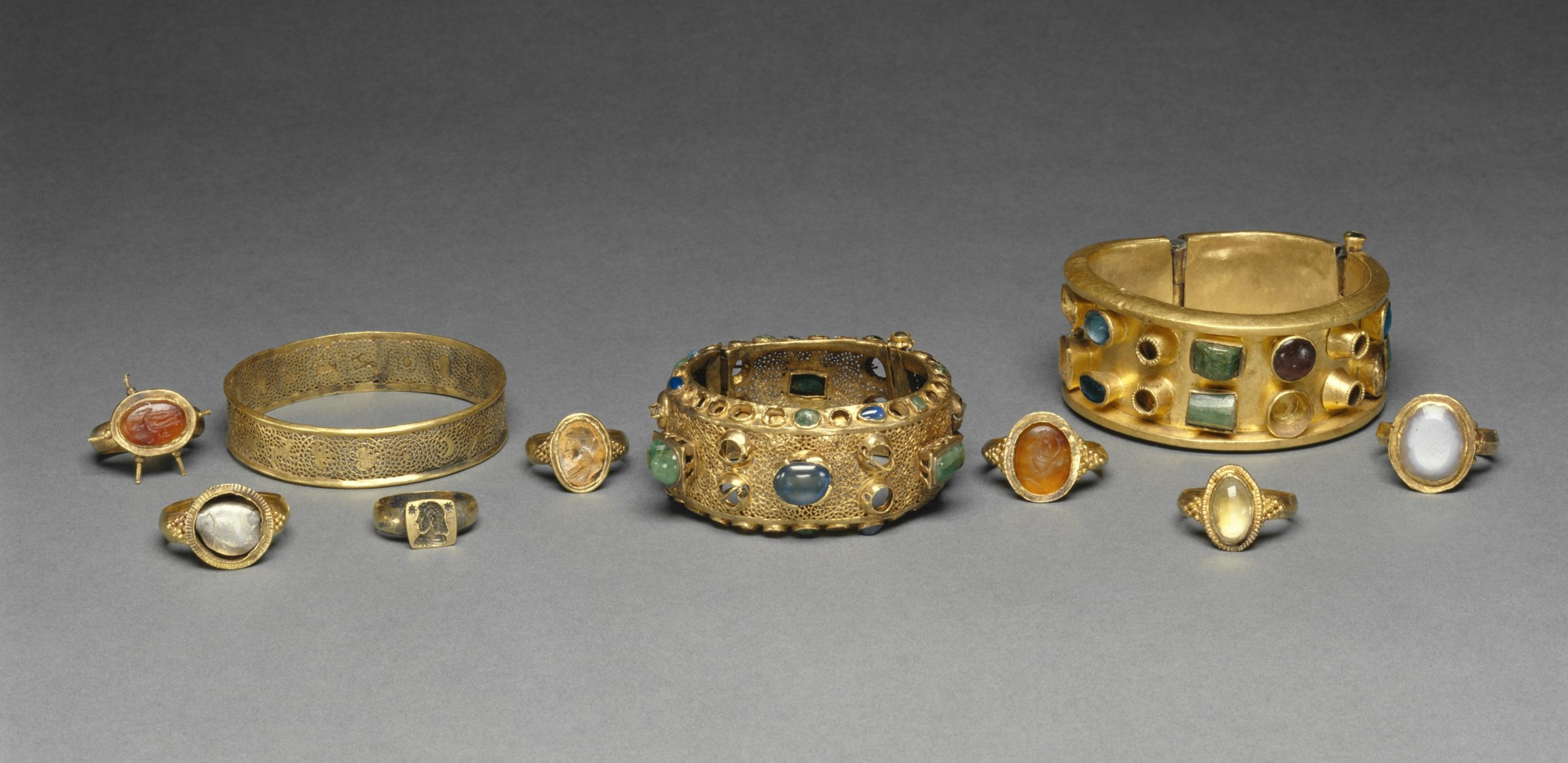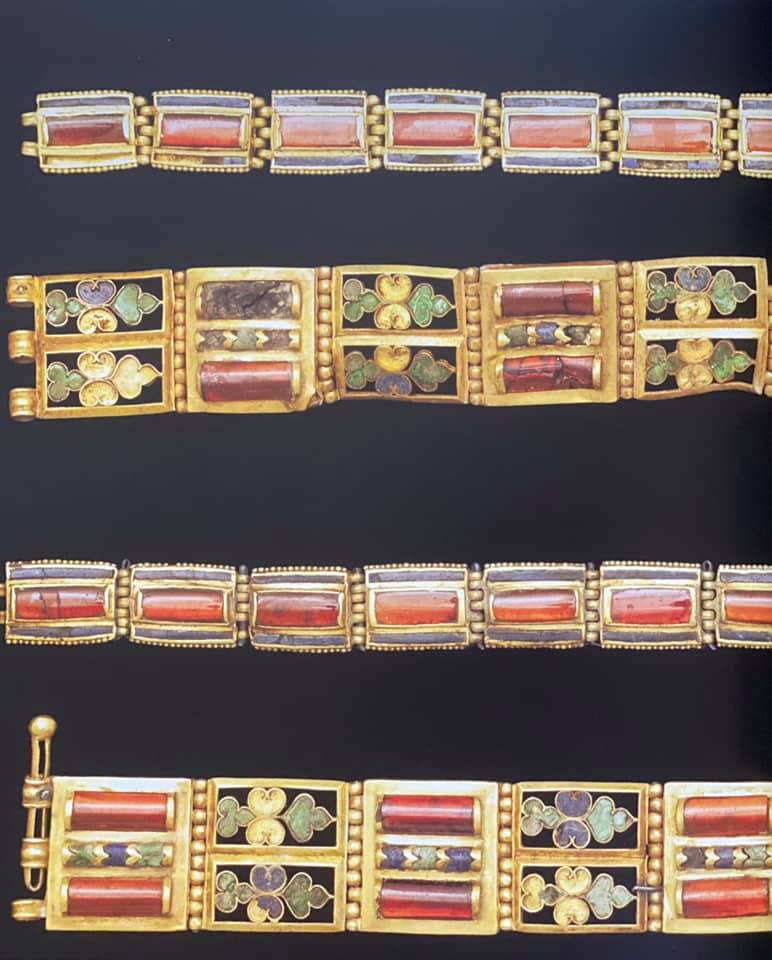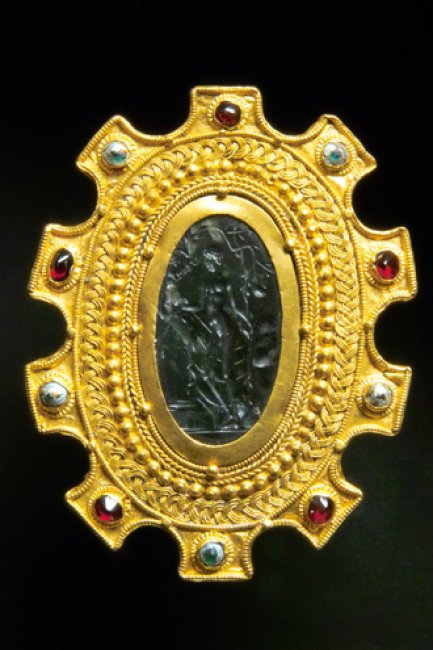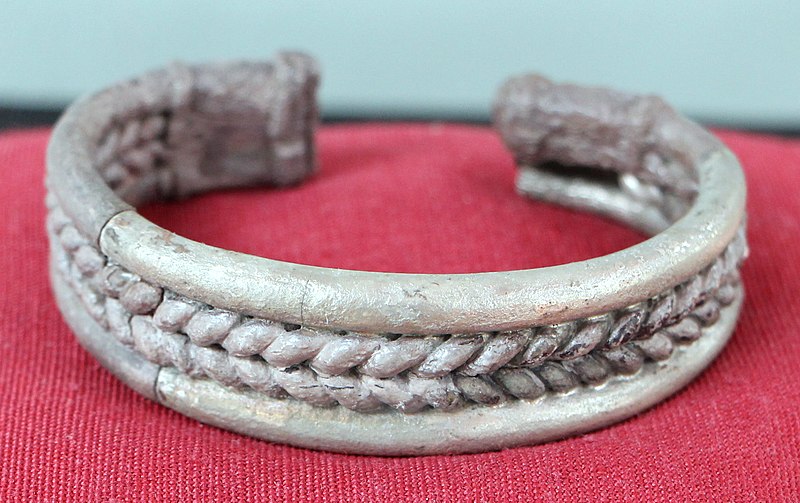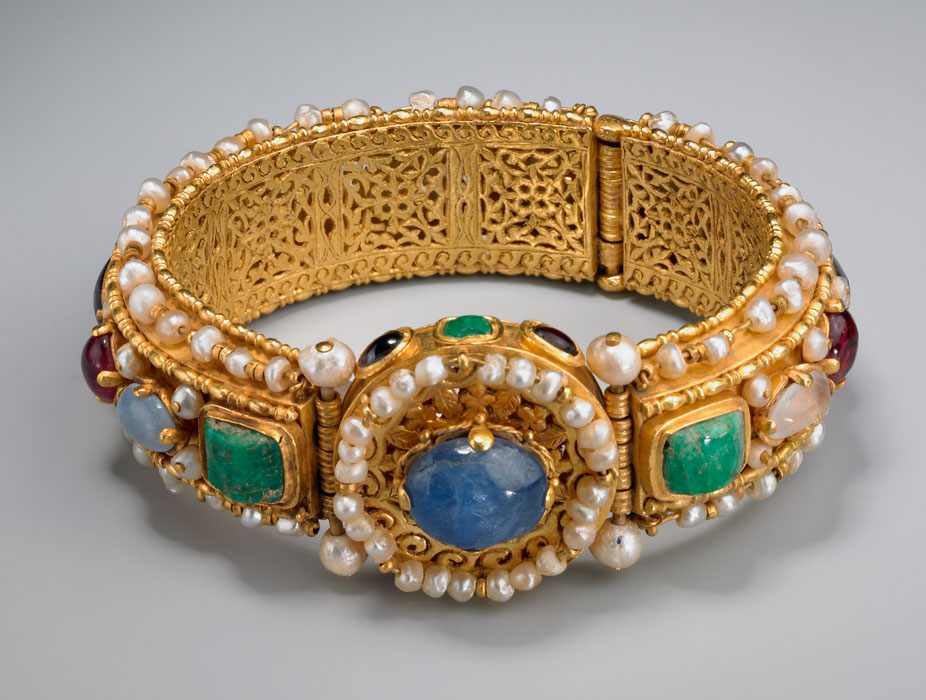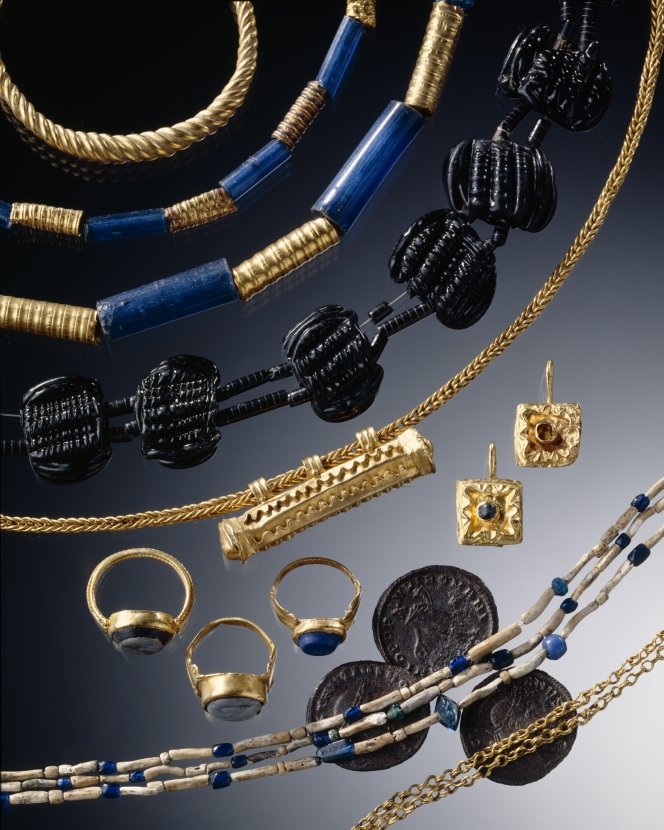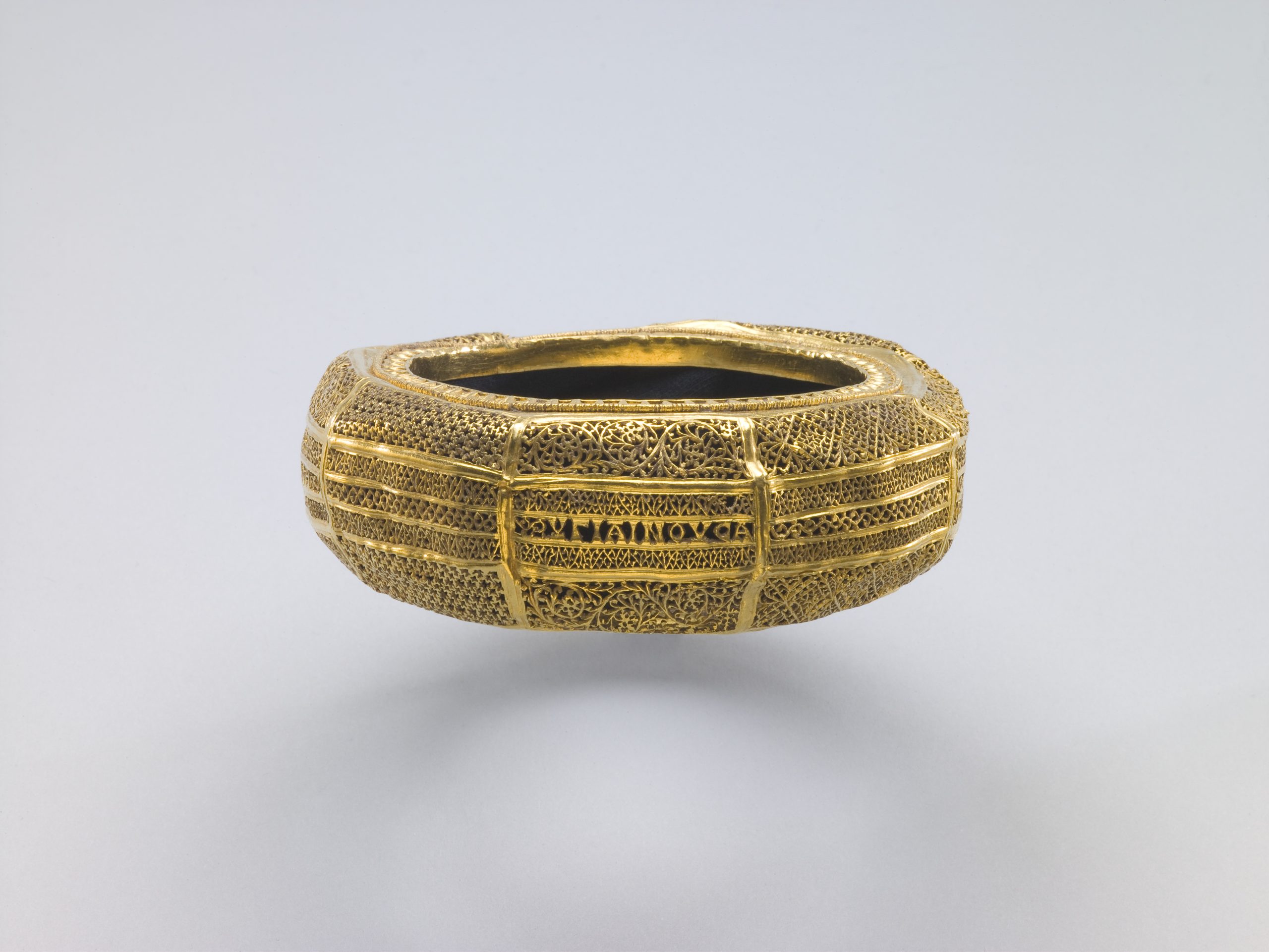- Aquincum, Hungary – 3rd century
- Bulgaria, 3rd century [female burial, Silistra >> read more]
- Bulgaria, Ratiaria, 3rd century
- Syria or Lebanon, Louvre, Roman Imperial
- Syria, two bracelets 175 / 225 CE
- Belgium, 1st quarter of the 3rd century
- Georgia, 2nd century
Aquincumi ékszerek/ Jewellery in Aquincum
Annamária R. Facsády https://www.academia.edu
Gold and jet; 3rd century. Diameter: 5.9 × 6.3 cm
“This is a bracelet, D-shaped in cross section, consisting of two arching parts, one longer and one shorter, with a hinge and also a fastener.
The origins of the jet bracelet made up of two opening parts fastened by means of gold elements are uncertain. On the basis of analyses into the material used, it may have originated from the Rhineland or from the mines of Yorkshire.
Exact parallels of the type are known from Britannia
(York), Italia (Monte Gelato) and Thracia (Ratiaria). In
the bracelet type consisting of two parts and corresponding in shape to Ruseva-Slokoska’s Type IV, Greek prototypes can be recognised, according to Higgins. On the basis of its parallels, the Aquincum piece may have been made in the third century, a dating supported by the design of the fastener, too.”
Aquincum Museum Inv. no. 51468
Prov: Bp. III. Bécsi út, ‘Leipeiger factory’ (burial find)
Budapest, 3rd district, Bécsi street; Aquincum


Gold, jet. Diameter outer 7,0 – 7,5 cm, diameter inner
4,8 – 5,2 cm, thickness 0,8 – 1,4 cm, weight 32,42 g
RMH Silistra, inv. N 2113
3rd century, Silistra necropolis, Roman time Bulgaria
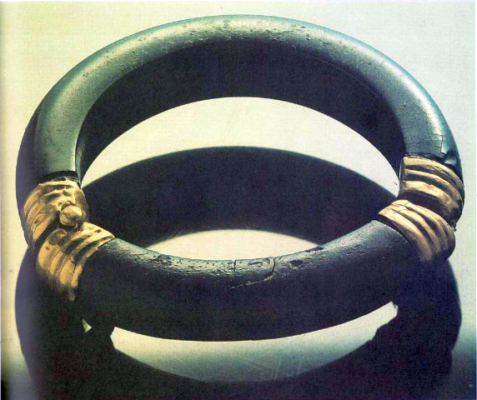
Photo after L. Ruseva-Slokoska
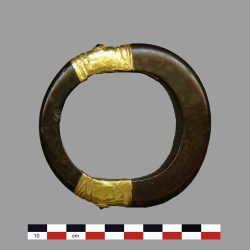
Syria or Lebanon; Roman Imperial (-63 – 324)
Hight: 8.4 cm; Thickness: 1.6 cm; Diameter: 9.2 cm; Weight: 400 g
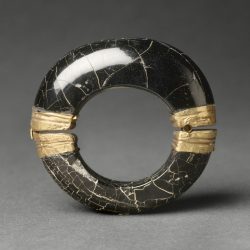
175 / 225 CE [2nd/3rd century]
Place of creation: Syria
Place of discovery: Amrit
Height: 3.8 cm; Diameter: 8 cm; Diameter (internal): 6.2 cm; Weight: 120.13 g
Musée du Louvre, Bj 2251



175 / 225 CE [2nd/3rd century]
Place of creation: Syria
Place of discovery: Tartous
The bracelet has a relief decoration in the form of a grapevine on the side, and a representation of the crater and a scene of the She-wolf feeding Remus and Romulus on the outer surface.
Height: 3.2 cm; Diameter: 10 cm; Weight: 138.93 g

Bracelet decorated with a portrait of Caracalla [Roman Emperor 211-217]. Jet, gold; outer diameter: 7.65 cm
Found: Presles, Grotte des Nutons, Belgium
Dated: 1st quarter of the 3rd century
Royal Society of Archaeology, History and Paleontology, Charleroi.
Les parures à l’époque gallo-romaine, Nathalie Bozet
In: CATTELAIN P., BOZET N., DI STAZIO G. (ed.) – 2012. La parure de Cro-Magnon à Clovis https://www.academia.edu; pp. 135-164
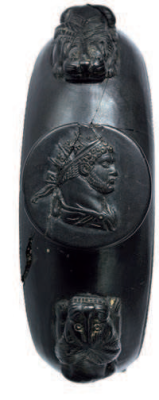
To the north of Presles, the excavations carried out in a series of caves revealed the traces of an intermittent human occupation which extends from Prehistory to the Middle Ages. In one of these caves, the Trou des Nutons, in 1904 was found material from the Roman period: ceramics, glass, metal and bone objects. Among the finds was this jet and gold bracelet adorned with the relief medallion with the effigy of Caracalla and two sconces in the shape of a lion’s head.
Elliptical bracelet made of jet with a semicircular section, consisting of two parts, linked by a hinged clasp made of gold leaf in the form of a socket. The sides of the jet ribbons are decorated over the entire surface of the ring with a narrow ribbon of small diagonal grooves between two continuous lines.
“The heavier upper part of the bracelet is decorated with motifs in cut relief: a circular central medallion with the profile draped bust of Caracalla to the right, wearing a radiate crown and on both sides a stylized reclining lion. The bracelet was probably made between 215 and 235, since Caracalla is represented with the radiated crown only from 215 CE and that its worship like deified emperor knows its peak until approximately 235 CE.
From the eastern provinces of the Danube, only a few comparable examples are known, which also date from the first half of the 3rd century; the latter probably perished tragically if we are to believe the multiple traces of fire observed on the finds. It is therefore very likely that this bracelet was taken (hidden?) as a precious personal piece of jewelry in the cave by its owner, who may have come from one of the villa close to Aiseau and who probably could not have escape from the cave.” [Nathalie Bozet]
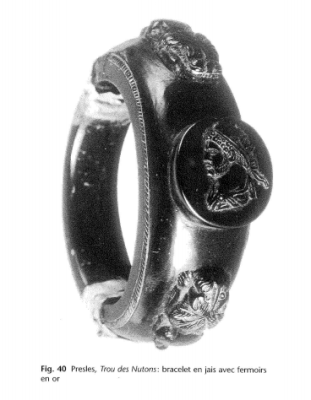

- Les parures à l’époque gallo-romaine, Nathalie Bozet
In: CATTELAIN P., BOZET N., DI STAZIO G. (ed.) – 2012. La parure de Cro-Magnon à Clovis https://www.academia.edu; pp. 135-164 - Raymond Brulet, Les Romains en Wallonie, Racine, Bruxelles, 2008 https://www.academia.edu; p. 304
- Aquincumi ékszerek/ Jewellery in Aquincum Annamária R. Facsády https://www.academia.edu
- L. Ruseva-Slokoska, Roman Jewellery A Collection of the National Archaeological Museum, Sofia 2019
- ГРИВНИ ЗА КРАКА ОТ МИЗИЯ И ТРАКИЯ, Мирослав МАРКОВ/ ANKLE BRACELETS FROM MOESIA AND THRACIA, Miroslav Markov https://www.academia.edu

